Gypsy Heart
Gold Member
- #1
Thread Owner
These are great places to look around. Even if you cant hunt the exact spot,some of these properties are now restored and there are searchable properties,empty lots adjoining them.
Waterbury Vermont. http://www.oldstagecoach.com/history/history-old-stagecoach-inn-vermont-bed-and-breakfast.asp
The town of Waterbury was established in 1763 under a grant from King George III, but sustained settlement did not begin until 1780. Many of these early pioneers were from Connecticut. In fact, Waterbury , Vermont , took its name from Water-bury, Connecticut . Then, as now, the town lying where the Winooski River breaks through the Green Mountain chain on its way west to Lake Champlain sits at a strategic intersection: east/ west, from Montpelier to Burlington, and north/ south from the Mad River Valley up to Stowe. Therefore, Waterbury was a logical location for an establishment catering to travelers going in either direction.
The inn was built in 1826 by Waterbury’s first lawyer, later Judge, Dan Carpenter
Waynesville MO http://www.fidnet.com/~bigpiney/building.html
The Old Stagecoach Stop, probably known as The Waynesville House, was built by William Walton McDonald on land he purchased in 1854. W. W., a veteran of the Mexican War, came to Pulaski County from St. Louis County around 1850 and became County Clerk, Circuit Clerk, and Postmaster. His hotel, originally a double pen log building, was a stop on the St. Louis to Springfield stage route.
When Civil War broke out, the stage road became important to the Union Army for moving men and supplies from the rail head at Rolla to southwestern Missouri and into Arkansas. A telegraph wire was strung for communication and the already venerable path became known as The Wire Road. The Union positioned a fort on the hill above the town square to guard the road, communications, and to "clear the surrounding country of guerrillas". Colonel Albert Sigel commanded the Waynesville Post and commandeered McDonald's building for a hospital.
Chitina Alaska http://www.hotelchitina.com/#area
Chitina sprang up with a boom from 1908 to 1915. It once boasted that it had the finest accommodations north of Seattle...Breedman’s Hotel Chitina. It was a transportation “hub” connecting the Kennicott copper mine with Seattle smelters via train from Kennicott to Cordova; then barge to Seattle. It also connected to Fairbanks via road. The railroad arrived in 1910 and Chitina thrived until 1938 when the railroad pulled out. It quickly became a ghost town
Miltonville Ohio http://www.middle-america.org/crout/Madison/miltonvl.html
In the 1850's Miltonville was at its height of prosperity. It had a United Brethren Church and a public schoolhouse, and two general stores, which sold everything from needles and pins to farmers' plows.
Miltonville being located at an important crossroads, an old stagecoach line passed through the village. This meant that it was often an overnight stop, and two hotels were built and did a good business. Each, of course, had a tavern.
According to historians the stage coaches followed a route from Cincinnati to Hamilton, up the Prairie Road (now the Hamilton- Middletown Road) to a ford crossing just south of Gregory Creek. The road led to Trenton, then on to Miltonville. At Miltonville, the stagecoach forded Elk Creek at the present bridge and then turned north, following the east side of the creek and cutting through the present Augspurger farm.
For many years, according to W.C. Augspurger of Howe Road, the stagecoach tracks were visible where they cut up the side of the incline. The old trail finally emerged at the top of the West Middletown hill, and a coach could turn eastward toward Middletown or westward to Eaton and Richmond.
The Eagle Hotel built around 1816 was the chief landmark of the village.
When the old Miltonville hostelry was torn down in December 1982, it was the last of the business and industrial structures to go. Named after John Milton, the famous English poet, the village reached its zenith around 1850. At that time it was one of the most prosperous in Ohio with three blacksmith shops, two wagon shops and a buggy painting shop, a tailor and shoe shop and two general stores. At that same time it also boasted of two slaughter houses and two potteries, and a pump manufacturing plant. A four-story grist mill was operating along the race from the dam on Elk Creek just north of the crossroads.
Marsing Idaho Owyhee County Poison Creek Stage Stop No site ...just photo below
Waterbury Vermont. http://www.oldstagecoach.com/history/history-old-stagecoach-inn-vermont-bed-and-breakfast.asp
The town of Waterbury was established in 1763 under a grant from King George III, but sustained settlement did not begin until 1780. Many of these early pioneers were from Connecticut. In fact, Waterbury , Vermont , took its name from Water-bury, Connecticut . Then, as now, the town lying where the Winooski River breaks through the Green Mountain chain on its way west to Lake Champlain sits at a strategic intersection: east/ west, from Montpelier to Burlington, and north/ south from the Mad River Valley up to Stowe. Therefore, Waterbury was a logical location for an establishment catering to travelers going in either direction.
The inn was built in 1826 by Waterbury’s first lawyer, later Judge, Dan Carpenter
Waynesville MO http://www.fidnet.com/~bigpiney/building.html
The Old Stagecoach Stop, probably known as The Waynesville House, was built by William Walton McDonald on land he purchased in 1854. W. W., a veteran of the Mexican War, came to Pulaski County from St. Louis County around 1850 and became County Clerk, Circuit Clerk, and Postmaster. His hotel, originally a double pen log building, was a stop on the St. Louis to Springfield stage route.
When Civil War broke out, the stage road became important to the Union Army for moving men and supplies from the rail head at Rolla to southwestern Missouri and into Arkansas. A telegraph wire was strung for communication and the already venerable path became known as The Wire Road. The Union positioned a fort on the hill above the town square to guard the road, communications, and to "clear the surrounding country of guerrillas". Colonel Albert Sigel commanded the Waynesville Post and commandeered McDonald's building for a hospital.
Chitina Alaska http://www.hotelchitina.com/#area
Chitina sprang up with a boom from 1908 to 1915. It once boasted that it had the finest accommodations north of Seattle...Breedman’s Hotel Chitina. It was a transportation “hub” connecting the Kennicott copper mine with Seattle smelters via train from Kennicott to Cordova; then barge to Seattle. It also connected to Fairbanks via road. The railroad arrived in 1910 and Chitina thrived until 1938 when the railroad pulled out. It quickly became a ghost town
Miltonville Ohio http://www.middle-america.org/crout/Madison/miltonvl.html
In the 1850's Miltonville was at its height of prosperity. It had a United Brethren Church and a public schoolhouse, and two general stores, which sold everything from needles and pins to farmers' plows.
Miltonville being located at an important crossroads, an old stagecoach line passed through the village. This meant that it was often an overnight stop, and two hotels were built and did a good business. Each, of course, had a tavern.
According to historians the stage coaches followed a route from Cincinnati to Hamilton, up the Prairie Road (now the Hamilton- Middletown Road) to a ford crossing just south of Gregory Creek. The road led to Trenton, then on to Miltonville. At Miltonville, the stagecoach forded Elk Creek at the present bridge and then turned north, following the east side of the creek and cutting through the present Augspurger farm.
For many years, according to W.C. Augspurger of Howe Road, the stagecoach tracks were visible where they cut up the side of the incline. The old trail finally emerged at the top of the West Middletown hill, and a coach could turn eastward toward Middletown or westward to Eaton and Richmond.
The Eagle Hotel built around 1816 was the chief landmark of the village.
When the old Miltonville hostelry was torn down in December 1982, it was the last of the business and industrial structures to go. Named after John Milton, the famous English poet, the village reached its zenith around 1850. At that time it was one of the most prosperous in Ohio with three blacksmith shops, two wagon shops and a buggy painting shop, a tailor and shoe shop and two general stores. At that same time it also boasted of two slaughter houses and two potteries, and a pump manufacturing plant. A four-story grist mill was operating along the race from the dam on Elk Creek just north of the crossroads.
Marsing Idaho Owyhee County Poison Creek Stage Stop No site ...just photo below



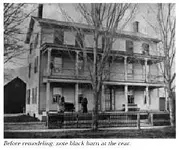
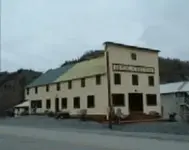
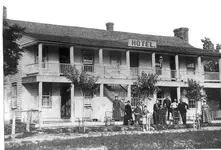





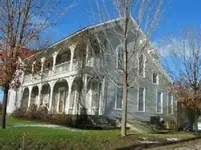
 We love you Gypsy!! ~hugs~
We love you Gypsy!! ~hugs~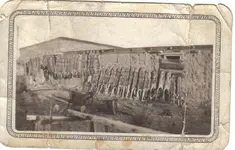
 Great post! Thanks. Your the best.
Great post! Thanks. Your the best.